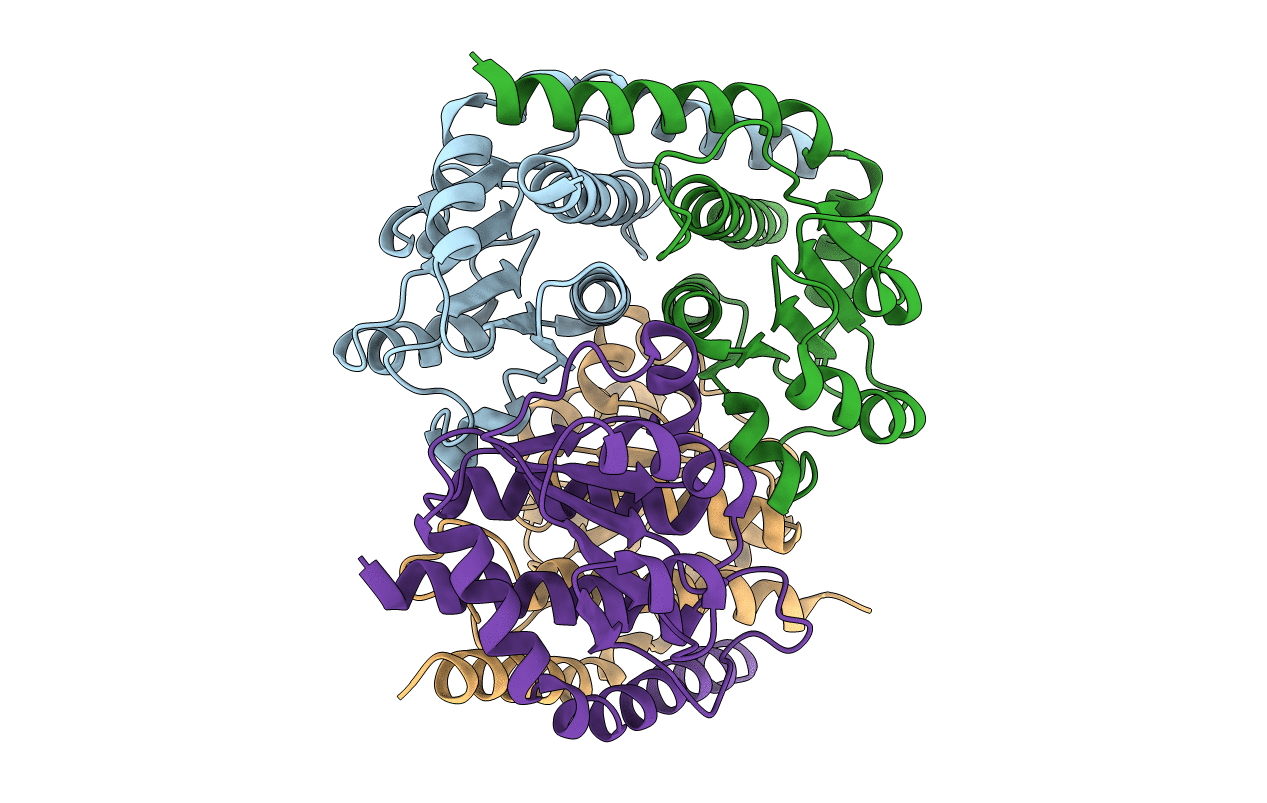
Deposition Date
2010-06-24
Release Date
2011-01-26
Last Version Date
2023-12-20
Entry Detail
PDB ID:
2XHZ
Keywords:
Title:
Probing the active site of the sugar isomerase domain from E. coli arabinose-5-phosphate isomerase via X-ray crystallography
Biological Source:
Source Organism:
ESCHERICHIA COLI (Taxon ID: 562)
Host Organism:
Method Details:
Experimental Method:
Resolution:
2.60 Å
R-Value Free:
0.30
R-Value Work:
0.26
R-Value Observed:
0.26
Space Group:
P 1 21 1


